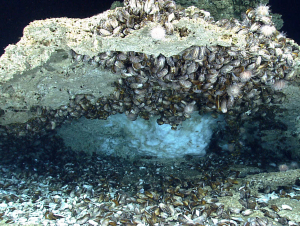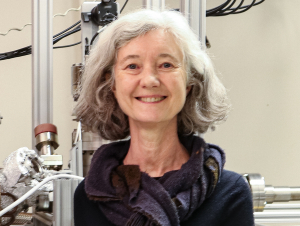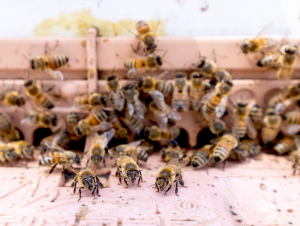To request a media interview, please reach out to experts using the faculty directories for each of our six schools, or contact Jess Hunt-Ralston, College of Sciences communications director. A list of faculty experts is also available to journalists upon request.
Latest News
In a groundbreaking study, a team of Georgia Tech researchers has unveiled a remarkable discovery: the identification of novel bacterial proteins that play a vital role in the formation and stability of methane clathrates, which trap methane gas beneath the seafloor. These newfound proteins not only suppress methane clathrate growth as effectively as toxic chemicals used in drilling but also prove to be eco-friendly and scalable. This innovative breakthrough not only promises to enhance environmental safety in natural gas transportation but also sheds light on the potential for similar biomolecules to support life beyond Earth.
The College of Sciences graduate students were chosen as 2023-24 Herbert P. Haley Fellowships for their research and academic achievements.
Physicist Claire Berger has been awarded the Chevalier dans L'ordre des Palmes Académiques for her groundbreaking graphene research — and her work on strengthening ties between U.S. and French scientists.
Neurosciences research holds enormous potential for wide-ranging health and societal impact, and Georgia Tech’s culture of applied research and integrated interdisciplinary liberal arts scholarship is uniquely positioned to create the environment in which Neuro Next can become an international leader in the discovery, innovation, and translation in neuroscience and neurotechnology.
Each year, exposure to airborne particulate matter known as PM2.5 (particles with a diameter smaller than 2.5 micrometers) leads to millions of premature deaths worldwide. Organic aerosols are the dominant constituents of PM2.5 in many locations around the world. Historically, the chemical complexity of organic aerosols has made it difficult to gauge their toxicity level. But a study led by researchers at Georgia Institute of Technology has advanced understanding of both the chemical composition of PM2.5 and the reaction of alveolar cells of the lungs exposed to this pollution, highlighting the growing threat posed to human health.
In response to changing climates, many plants and animals are moving to higher elevations, seeking cooler temperatures. But a new study from Georgia Tech and the University of Colorado Denver finds that flying insects like bees and moths may struggle with insurmountable issues to this escape route.








